
The laboratory studies the history of climate, regularities and mechanisms of the dynamics of the natural environment in the Holocene and Pleistocene. For this, geological and biological proxy indicators are used. Theoretical and experimental studies are carried out in the field of magnetism of natural geological and biological objects with an assessment of their physical parameters and origin. Equipment and methods for diagnosing various magnetic components are being developed.

Research
- quantitative reconstructions of ecological and climatic changes in the Holocene and Pleistocene using various paleoindicators: pollen, diatoms, chironomid, carcinological analysis;
- study of the magnetism of sediments and sedimentary rocks to increase the reliability of reconstructions of the environment – climate and geomagnetism, as well as to identify changes in the magnetic parameters of rocks under the influence of various processes – such as the formation and destruction of oil and gas deposits, gas hydrates, the migration of hydrocarbons in general, the development of applications for these studies for solving practical problems;
- analysis of the influence of the geomagnetic field on biological objects, both at present and in the geological past, development of methods for paleobiological and paleoclimatic reconstructions, development of the possibilities of using magnetic methods in biomedicine;
- identification of the origin (cosmic, natural biogenic and abiogenic, anthropogenic) and distribution of magnetic particles in the modern environment, application of the results to solve environmental problems.
creation and improvement of instruments for express measurement of magnetic parameters of weakly magnetic natural objects, theoretical substantiation of quantitative interpretation of measurement results.
Services
- Analysis of samples in the liquid phase and in solutions by capillary electrophoresis Kapel-105M, determination of the content of anions, cations, alkali and alkaline earth metals, organic compounds in water and water extract of soils; analysis of environmental objects.
- Freeze drying in a Martin Christ Alpha 1-4 LSCplus lyophilizer samples, sample preparation for further steps; conservation.
- Measurement of remanent magnetization of rocks and angular characteristics (declination and inclination) with a magnetometer Dual speed spinner magnetometer JR-6A.
- Magnetic susceptibility anisotropy measurement Multi-function Kappabridge MFKA1-FA.
- Measurement of curves of normal residual magnetization of samples with a continuous increase in the external magnetic field with a coercive spectrometer J_meter.
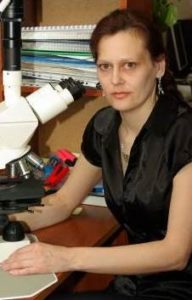
Head – Larisa Frolova
Candidate of Science in Biology, Associate Professor, Senior Research Associate
E-mail: larissa.frolova@kpfu.ru
Phone: + 7 843 231 52 89
 |
Dual speed spinner magnetometer JR-6A
The equipment is designed to measure the residual magnetization of rocks and angular characteristics – declination and inclination. Its exceptional sensitivity should allow measurement of very weakly magnetic rocks, such as, for example, various sedimentary rocks, including limestones and quartzites. Measuring range – From 0 to 12500 A/m |
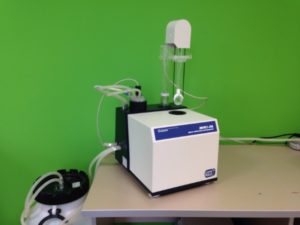 |
Multi-function Kappabridge MFKA1-FA
The equipment is designed to measure the anisotropy of the magnetic susceptibility. Two modes of sample rotation are possible. Slow rotation is used for loose, poorly consolidated rocks. Operating frequencies – F1- 976 Hz; F2- 3094 Hz; F3- 15616 Hz. Field strength – F1: 2 to 700 A/m, F2: 2 to 350 A/m, F3: 2 to 200 A/m. The device is also equipped with a set for high and low temperature measurements – non-magnetic furnace CS4 and non-magnetic cryostat CS-L. Temperature range from -192 ºС to 700 ºС. |
| Device for demagnetization of samples by an alternating magnetic field LDA5
The equipment is designed to demagnetize samples with an alternating field without changing the rest of the magnetic characteristics. Demagnetization field – From 1 to 200 mT. |
|
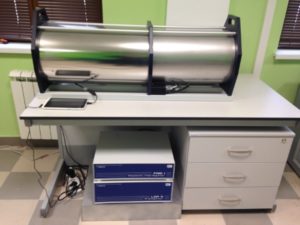 |
Hysteresis-free sample magnetizer PAM 1
The equipment is designed for hysteresis-free magnetization, thanks to the generation of a weak DC magnetic field, which, thanks to specially designed electronic filters, is superimposed on a stronger alternating field generated by the sample demagnetizer. Hysteresis-free magnetization – From 0 to 500 µT, Impulse direct magnetization: – direct magnetization field – From 0 to 20 mT; – period of direct magnetization – From 0.01 to 10 s |
 |
Auto-registering torsion magnetic balance
The balance operates according to the zero method and allows for differential thermomagnetic analysis of samples by induced magnetization. Heating to a temperature of 800 °C. Heating rates up to 150°C/min. The set magnetic field is 200 mT. |
 |
Coercive Spectrometer J_meter
The device makes it possible to automatically measure the curves of the normal residual magnetization of samples with a volume of about 1 cm3 with a continuous increase in the external magnetic field. The possibility of obtaining a complete hysteresis loop simultaneously from remanent and inductive magnetizations makes it possible to obtain many important and interesting parameters. |
 |
Bartington MS2-B
Magnetic susceptibility meter at two frequencies (465 and 4650 Hz). |
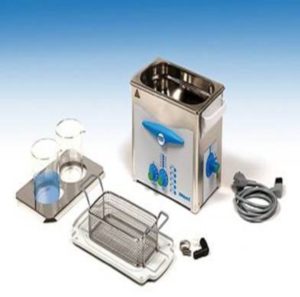 |
Ultrasonic bath FinnSonic М3 (with holder, cups, cup rings, lids) For ultrasonic cleaning of hard surfaces from complex organic and inorganic contaminants. Volume up to 2.75 liters. External dimensions, mm 300x179x214, internal dimensions, mm 240x137x100. Basket size, mm 198x106x50. Weight 3.3 kg. The ultrasound frequency is 40 kHz. Operating temperature, (range) from ambient temperature to 80°C. |
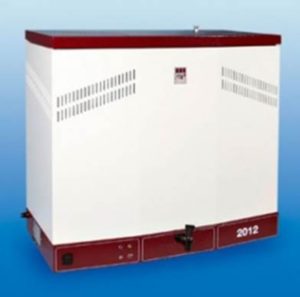 |
Distiller GFL-2012 (tank 24l)
The distillate is used to prepare samples of paleoecological samples, prepare reagents, for purification and preparation of buffer solutions, for analytical purposes. Distiller capacity 12 l/h. The capacity of the distiller tank is 24 liters. Distiller dimensions, external (W x D x H) 780 x 410 x 670 mm. |
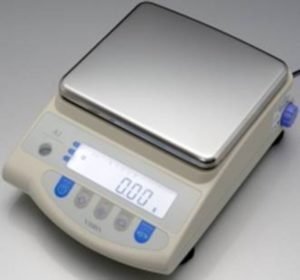 |
Electronic laboratory scales AJH-220 CE ViBRA (Shinko)
The largest weighing limit: 220 g. The smallest weighing limit: 0.02 g. Resolution: 0.001 g. Dimensions: 235x182x165 mm, weight 1.6 kg. |
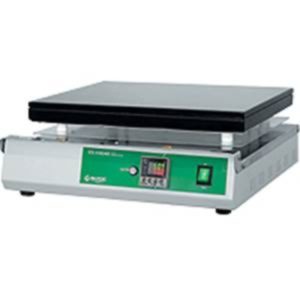 |
Heating plate ES-H3040
Stainless steel body with chemical resistant powder coating. The heating platform made of duralumin is covered with ceramics. The maximum heating temperature of the platform is 300°C with a temperature setting accuracy of ±0.1°C. The plate size is 300×400 mm. |
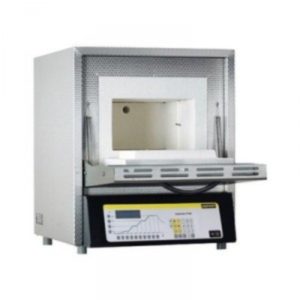 |
Muffle furnace L 15/12 (controller P 330) Nabertherm
Maximum temperature 1200°C. Heating time to max. temp. 105 min. Chamber volume 15 l. Internal dimensions (WxDxH) 230 x 340 x 170 mm, external dimensions (WxDxH) 480 x 650 x 570 mm. Weight 55 kg. |
 |
Water bath MB-13 Julabo
Operating temperature range from +20 to +100 °C. Temperature stability ±0.02 °C. Dimensions W x D x H 57 x 33 x 37 cm. Weight 8 kg. |
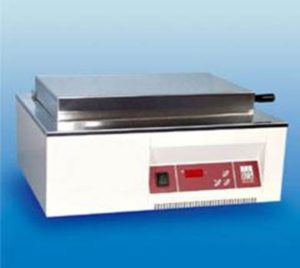 |
Water bath GFL 1003
Microprocessor temperature control in the bath. Two separate overtemperature limit switches. The heating elements, the inner surface of the bath, the lid and all parts in contact with water are made of stainless steel. Dimensions (WxDxH) 670x300x155 mm. Depth 100 mm. Weight 8 kg. |
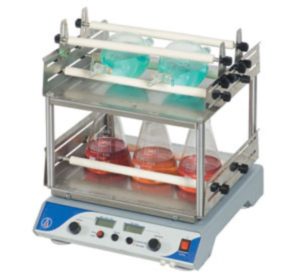 |
Mixer LOIP LS-210
Type of movement: orbital. Maximum platform oscillation frequency: 40-300 min-1. Platform movement amplitude: 30 mm. Maximum platform load: 20 kg. Platform size 445×305 mm. Overall dimensions 525×510×225 mm. Weight 32 kg. |
 |
Centrifuge ORTO ALRESA, series 22, model Biocen 22
Maximum speed 15,000 rpm, maximum acceleration (R.C.F) 21,885 x g. Centrifuge dimensions (WxDxH) 27.6x39x27.2 s. Centrifuge weight 17 kg. |
 |
Microscope AxioLab A1
The total magnification of the microscope is 50x-1000x. Lens magnification 5x; 10x; 20x; 40x; 50x; 100x. Lens types EC Epiplan, EC Epiplan-Neofluar, EC Epiplan-Apochromat. Eyepiece magnification and field of view PL 10x/20 Br, PL 10x/22 Br. Available contrast methods are bright/darkfield, standard/circle. polarization, standard/circle DIC, fluorescence. Built-in illuminator HAL 50 halogen 12V/50W. Additional LED illuminator (optional). Video/Photo output top location. Hard anodized object table 75x30mm (right, rectangular with rounded edges, for transmitted/reflected light, with a slider). Eyepiece attachments binocular or trinocular with different camera/eyepiece ratios and angles. |
 |
Microscope AxioScope A1
The total magnification of the microscope is 12.5x-1000x. Lens magnification 1.25x; 2.5x; 5x; 10x; 20x; 40x; 50x; 63x; 100x. Lens types A-Plan, Achroplan, Plan-Neofluar, N-Achroplan, EC Epiplan, EC Epiplan-Neofluar, EC Epiplan-Apochromat. Additional magnification unit Optovar 1.25x, 1.6x, 2.5x, 4.0x. Eyepiece magnification and field of view W-PL 10x/23mm (optionally E-PL 10x/23mm, PL 10x/23mm). Available contrast methods are bright/darkfield, standard/circle. polarization, standard/circle/PlasDIK, fluorescence. Built-in illuminator (optional) HAL 50 halogen 12V/50W for transmitted light. Illuminator with external power supply (optional) HAL 100 (halogen), Colibri (LED), self-adjusting mercury HBO 50, HBO 100, HXP 120. Video/Photo output optional top and/or side. Hard anodized stage (optional) 75x50mm (right/left, rectangular/rounded, for transmitted/reflected light), swivel 75×50/240o, 360o swivel, motorized. Eyepieces 30o/23 binocular, 30o/23 trinocular (50:50 and 100:100, reverse image), 20o/23 trinocular (100:100, direct image), 20o/23 and 15o/23 ergonomic |
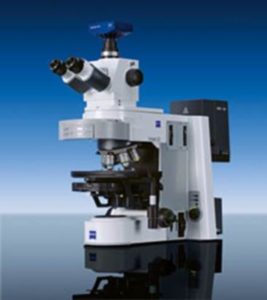 |
Microscope Axio Imager.A2
Available research methods: in reflected light – bright / dark field, polarization, DIC-contrast, luminescence; in transmitted light – bright / dark field, phase contrast, polarization (orthoscopy and conoscopy), DIC-contrast. TIC method for measuring heights in the micro- and nanometer range. Eyepieces with a large field of view (23 and 25mm). Lenses with 5x, 10x, 20x, 50x, 100x, 200x, 500x, 1000x and 1600x magnifications. Additional magnification change system: 1.25x, 1.6x, 2.5x, 4.0x. Choice of halogen, light-emitting diode (LED), fluorescent light sources. Large selection of object tables: manual, motorized and rotary. The possibility of retrofitting with software for better research and remote control of the microscope from a computer. |
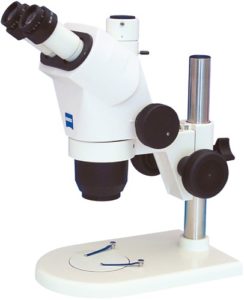 |
Stereomicroscope Stemi 2000-C
Magnification 6.5x – 50x. With camera connection, designed according to the Greenough principle. STEMI 2000 C microscope body with a large zoom ratio of 7.7:1 (0.65x – 5x) Continuous or incremental zoom via Click-/Stop function. Pair of eyepieces W-PL 10x/23, 10x magnification with eyecups. Tripod with stand diameter 32 mm, height 260 mm. Camera attachment with 100/100 switch between eyepiece and camera outlet. Magnification 6.5x – 50x. Field of view diameter 35.4 – 4.6 mm. Working distance 92 mm. C-Mount adapter for digital and video cameras (option). Adaptable attachment lenses from 0.3x to 2x (working distances up to 286 mm and object fields up to 118 mm possible). Camera adapter (C-Mount) 60 C ½”/0.5 x (others on request). |
 |
Multiparameter analyzer Multi 3420 SetG (WTW 2FD46G)
Allows you to measure the pH values, conductivity, dissolved oxygen content in water in the field. pH: -2.000 – 20.000 Battery operation: 4×1.5 V AA batteries or rechargeable batteries up to 150 hours. Dimensions, weight: 180x80x55 mm, 0.4 kg. |
 |
Capillary electrophoresis system “Kapel-105M”
Designed to determine the content of anions, cations, alkali and alkaline earth metals, organic compounds in water and soil water extract. Photometric detector 190-380 nm. Sample injection is hydrodynamic or electrokinetic. Sample change is automatic with two autosamplers for 10 input and 10 output test tubes. Flushing at a constant pressure of 1000 mbar. Quartz capillary (length 30-100 cm, inner diameter 50 or 75 microns). Liquid cooling of the capillary with setting and control of the coolant temperature (range from -10 °C to +30 °C from the ambient temperature). Possibility to set and/or change parameters during the analysis: analysis time, wavelength, pressure, temperature, voltage. Dimensions 500x500x500 mm. Weight 25 kg. |
